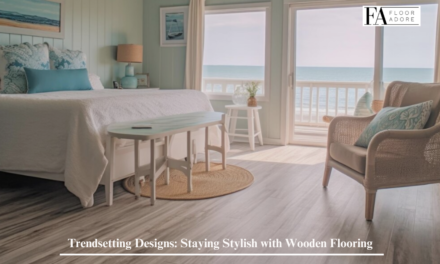\Wooden flooring is a popular choice for homeowners who want the look and feel of real wood without the high cost and maintenance. While wooden floors are undeniably adorable on their own, adding the perfect area rug can elevate your space to new heights. In this blog post, we’ll explore how to choose the ideal area rugs to complement your wooden flooring and create a cohesive, stylish look throughout your home.
Benefits of Area Rugs:
Before diving into the selection process, let’s consider the benefits of using area rugs on your wooden floors:
- Comfort: Area rugs provide a soft, plush surface underfoot, making your living space more comfortable and inviting.
- Protection: Rugs can help protect your wooden flooring from scratches, dents, and heavy foot traffic, particularly in high-use areas.
- Sound absorption: Area rugs can help reduce noise levels in your home by absorbing sound and minimizing echoes.
- Style: Rugs offer an opportunity to introduce color, pattern, and wooden flooring texture to your space, enhancing the overall design aesthetic.
Factors to Consider When Choosing Area Rugs:
Size and Placement:
The size and placement of your area rug can significantly impact the look and feel of your room. Consider the following guidelines:
- Living room: Choose a rug that is large enough to anchor your seating area, with the front legs of your furniture resting on the rug.
- Dining room: Select a rug that extends at least 24 inches beyond the edges of your dining table to allow space for chairs to be pulled out comfortably.
- Bedroom: Opt for a rug that extends several inches beyond the sides of your bed, or place smaller rugs on either side of the bed for a cozy touch.
When selecting an area rug, consider the color and pattern of your wooden flooring and the overall design scheme of your room.
- Complementary colors: Choose rug colors that complement your wooden flooring and enhance the room’s color palette.
- Contrasting patterns: If your wooden flooring has a prominent wood grain pattern, consider a rug with a contrasting design, such as a geometric or abstract print, to add visual interest.
- Neutral tones: For a versatile and timeless look, opt for rugs in neutral shades like beige, gray, or ivory, which can easily coordinate with various wooden flooring colors.
Material and Texture:
The material and texture of your area rug can impact both its durability and its overall look.
- Natural fibers: Rugs made from natural materials like wool, cotton, or jute offer a soft, organic feel that complements the natural look of wooden flooring.
- Synthetic fibers: Polypropylene or nylon rugs are durable, stain-resistant, and easy to clean, making them ideal for high-traffic areas or homes with children and pets.
- Texture: Consider the texture of your rug to your wooden flooring. A plush, high-pile rug can add warmth and softness, while a low-pile or flatweave rug can provide a sleek, modern look.
Maintenance and Durability:
When investing in an area rug, it’s essential to consider its maintenance requirements and overall durability.
- Easy care: Choose rugs that are easy to clean and maintain, such as those with stain-resistant finishes or low-pile construction.
- Durability: In high-traffic areas, opt for rugs made from durable materials like wool or synthetic fibers that can withstand heavy use.
- Rug pads: Use a non-slip rug pad beneath your area rug to prevent slipping, bunching, and potential damage to your wooden flooring.
Conclusion:
Choosing the perfect area rug for your wooden flooring involves considering size, color, pattern, material, texture, and maintenance requirements. By selecting a rug that complements your wooden floors and enhances your overall design scheme, you can create a cohesive, adorable look that brings comfort and style to your living space. Remember to prioritize durability and easy maintenance to ensure your investment lasts for years to come.





